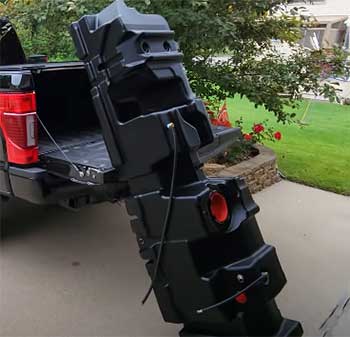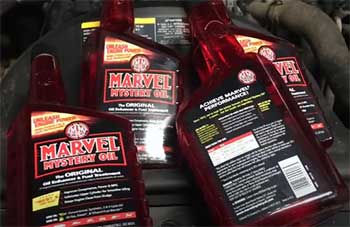S&B and Titan fuel tanks hold a massive reputation in the fuel supply market. However, S&B fuel tanks have better plug installation than Titan Fuel Tanks.
Controlling the fuel supply and maintaining temperature are two primary functions of fuel tanks. Before purchasing, you must ensure the fuel tanks are corrosion-resistant and stable.
Here is a quick comparison chart highlighting the main specifications of S&B and Titan fuel tanks.
Quick Comparison Chart
| Specifications | S&B Fuel Tanks | Titan Fuel Tanks |
| Dimension | 30 x 31 x 13 inches | 32 x 32 x 16 inches |
| Materials | Stainless Steels | Crossed-Link Polymer |
| Item Weight | 35 pounds | 42 pounds |
| Installation | Plugging Installation System | Single Mounting System |
| Price | $850 to $1400 | $1000 to $1500 |
Key Differences Between S&B And Titan Fuel Tanks
Now that you got a brief idea about the specifications of S&B and Titan fuel from the above chart. It’s time to focus on the key features that differentiate both products.
- Materials


The components of a fuel tank ensure its smooth locomotion and exceptional storage.
S&B consists of high-performing integrated pump fittings that add up to more than 200 liters of fuel.
S&B fuel tanks have high capacity and work as the best replacement for OE fuel tanks.
You will enjoy full driveshaft travel and ensure maximum mileage with the help of S&B fuel tanks.
The stainless steel cover is the best component of S&B fuel tanks that protects the entire tank’s body. As a result, you will receive a durable and robust fuel tank by purchasing S&B products.
Moving on to Titan fuel tanks, you will get less mileage and storage than S&B. The maximum capacity of Titan fuel tanks is 196 liters of fuel.
Moreover, Titan fuel tanks feature crossed-link polymers and military-grade components that provide superior protection.
Hence, S&B should be the perfect product for you based on its sustainable materials.
Also Read: Differences Between Seafoam Techron And Lucas Fuel System Cleaners.
- Plug And Play Installation
Good fuel tanks will feature an easy installation process that can contain the fuel for a long time. S&B tanks lead the race against Titan fuel tanks due to their efficient installing system.
The plugging system is the primary procedure of the S&B fuel tank installation process. The tanks mount in the stock location and don’t move any components.
Hence, you can reuse the factory fill neck.
Moreover, the S&B fuel tanks’ installation process is compatible with all the fifth wheelers and gooseneck hitches.
Meanwhile, the installation process of Titan fuel is relatively complex. Titan fuel tanks feature the Titan torque ring that enables a single mounting system for completing the installation process.
Both products offer a high-yielding installation process. However, S&B will help you avoid hassle and ensure a simple installation system.
- Fuel Gauge
The fuel gauge provides the limitation of your fuel tank and notifies you when you are running out of fuel. Regarding fuel gauge, there is little to differentiate between S&B and Titan fuel tanks.
With the help of S&B fuel gauges, you can accommodate more fuel on board by keeping the meter accurate. Since S&B fuel tanks reuse the OE meter-sending unit, you can always keep track of the fuel limit.
Like S&B tanks, Titan also uses a similar fuel gauge system. In addition, Titan fuel features digital metrics that can send notifications to your mobile during emergencies.
You can opt for Titan fuel tanks if you like a digital touch to your fuel tanks. Otherwise, S&B tanks are influential and will suffice your demand.
- Durability

Despite some problems with the S&B fuel tank, it consists of durable materials that provide better endurance capability than Titan.
The high-density crosslink polymer construction protects S&B tanks from external damage and rust.
On the other hand, Titan fuel tanks come with baked epoxy-coated straps that prevent erosion and corroding.
The low-trap design helps you to use every gallon of the tank.
It’s tough to separate both products based on durability.
However, S&B should be the perfect option due to its holding capacity.
- Price
The final aspect of the discussion is the price of both products. Regarding price, Titan fuel tanks are more expensive than S&B tanks.
Titan fuel tank’s price ranges from $1000 to $1500 due to its premium materials and qualities. Moreover, you have to bear the expense of shipping and installation charges.
On the other hand, S&B fuel tanks cost relatively low and provide better services. The price range from $850 to $1400 based on their models and specifications.
Therefore, if you want an affordable fuel tank with unique benefits, you should use S&B fuel tanks.
Which Fuel Tank Is A Better Option?
S&B fuel tank is leading the race against Titan tanks due to its affordable price range and superior quality.
Additional features like anti-wave internal baffles and integrated pump fitting make S&B tanks unique. Moreover, rich components like double-coated stainless steel ensure high durability and protection.
The cheap price range adds the cherry to the top for S&B fuel tanks. Compared to Titan fuel tanks, you can get better products in an affordable price range from S&B.
Overall, S&B tanks stand out due to their robust materials and top-notch service. After all the discussion, S&B sets to be the best option as your fuel tank.
Also Read: Pros And Cons of FASS Fuel System.
Frequently Asked Questions (FAQ)
Titan fuel tank manufactures and delivers their product from the United States of America. The company started its journey in 2003 to mitigate fuel-related problems.
The fuel tank capacity of Titan is around 26 gallons. The Titan fuel tank can store regular and unleaded fuel that is estimated at 15 to 20 miles.
The main function of fuel tanks is to control the fuel supply and maintain its temperature inside the tank.
Conclusion
Clearly, S&B fuel tanks triumph in this comparison of S&B and Titan Fuel Tanks. S&B immaculately combines efficiency and effectiveness.
Quality materials like stainless steel hardware provide adequate support and protection. At the same time, the effortless installation process and transfer pumps enhance efficiency.

